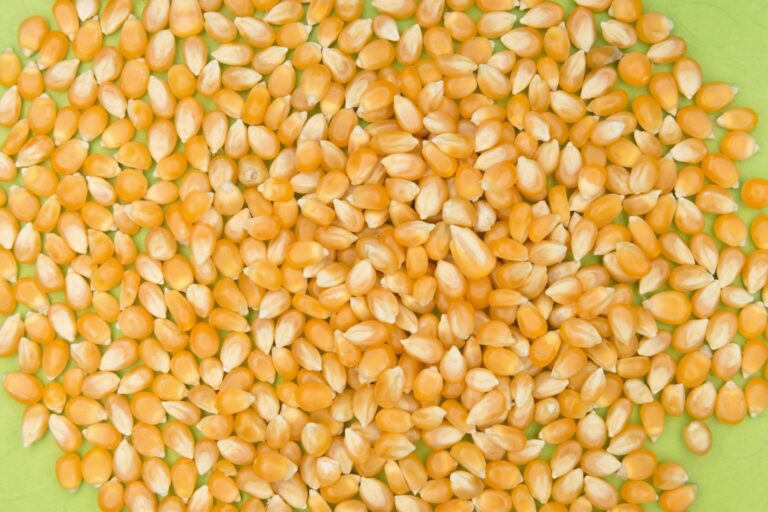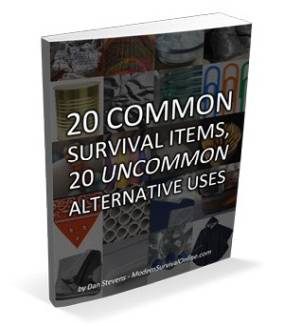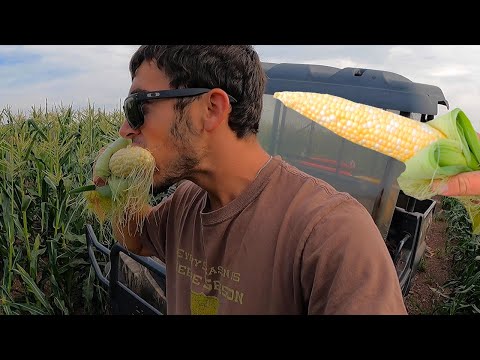Every self-reliant person I know spends hour upon hour planning to accommodate the need for food in all kinds of survival situations. Yeah, you can go for weeks without food before you starve, but only a handful of days without food before you’re dangerously low on energy.

But one thing that is routinely overlooked in all of these plans and preps is the fact that you might not be able to cook food even if you have it on hand.
In such a situation, knowing what is safe to eat raw might make a difference in your chances of survival. Let’s look at corn. Can you eat raw corn in a survival situation?
Yes, you can safely eat corn raw to survive. Raw, fresh corn is easy to eat, pretty tasty and offers plenty of calories, vitamins and minerals making it a good option.
Today, corn is eaten all around the globe as a true staple food source.
Nutritionally, it has a lot to offer although our overreliance on it in the modern American diet and its high level of calories in the form of carbohydrates has given it an unsavory reputation.
But, when it comes to survival, believe me, you can do a whole lot worse! I’ll tell you everything you need to know about incorporating corn into your survival diet below…
You can eat raw corn to survive, and it’s completely safe to do so, but you’d better be very cautious if you plan on eating raw, dry corn.
You can dry out just about any vegetable or grain, or any food for that matter, if you really want to but dry corn gets so hard it basically turns into stone!
Now, you might be hungry, you might even be borderline starving, but if you try to wolf down some dry corn without at least softening it in water first you’re probably going to have a bunch of jagged and broken stumps where your teeth used to be.
Also, take care if you were just eating older stored kernels too: most of them might be soft and edible as they are, but if you run into a kernel that has dried out more thoroughly than the others, you’ll easily chip or break a tooth.
Yes, and you should if you have the opportunity. Cooked corn will lose a significant amount of vitamins and minerals, but the nutrition present in the corn will be easier for your body to access since the corn will become more digestible. Generally, this is a good trade-off.
Also, cooking corn will ensure that harmful germs responsible for causing food poisoning and other illnesses will be killed off, increasing safety overall.
This isn’t to scare you off of eating raw corn if you’re truly in a bind and have neither the time nor the resources to cook it, but cooking is best if you can…
Corn, despite being ever-present in all sorts of junk foods and snacks, is surprisingly healthy in its natural form, with a good amount of protein and plenty of carbohydrates for energy.
This is obviously important for your diet during a survival situation, but even better is the great assortment of vitamins and minerals that it contains.
Looking at the vitamins first, we see that corn has a little bit of vitamin A and a good shot of vitamin C, but the best it has on offer is most of the B-complex vitamins, including great amounts of thiamine, niacin, pantothenic acid and folate along with lesser amounts of riboflavin and vitamin B6.
The mineral content is more limited but still highly respectable and useful, with great amounts of phosphorus and magnesium along with lesser amounts of zinc potassium, manganese and iron.
Altogether, corn will provide you plenty of energy even when eaten raw and it can improve all sorts of processes throughout the body, from promoting the formation of new red blood cells and the oxygenation of the blood supply to overall cellular function, electrolyte balance, tissue healing, and more.
If you need calories and a good shot of nutrition in the middle of a survival situation, but all you have on hand is raw corn you can do a whole lot worse.
It is not nutritionally complete, but very few grains and veggies are anyway!
Raw corn husks are safe to eat, but they sure aren’t very good. Yes, corn husks are used in various ways in various kinds of cuisine, most notably as natural wrappers for tamales, but despite this they just are not good to eat when raw.
They are very fibrous, chewy and pretty tough, and assuming you wanted to go through all that trouble they have very little to offer in the way of calories or overall nutrition.
The husks are something you should only eat raw if you are truly desperate for calories.
No. The corn cob, the part that grows and holds all of the kernels, is just too tough and dense to eat.
Strictly speaking, it is edible if it is boiled for a long time but it doesn’t have anything to offer you in terms of nutrition because it is mostly cellulose which is indigestible by people.
No matter how hungry you are, you can discard the cob without worry.
Absolutely not! The actual stalk that the corn cob grows on is way too tough and hard to be edible, and like the cob itself, it is mostly cellulose with very little else that it can provide in terms of nutrients.
Pick the ears of corn, remove the kernels and leave the stalks and cobs alone.
Yes, the roots of the corn plant are safe to eat but not very tasty and not particularly nutritious.
They can be boiled and eaten if you want to make maximum use of all parts of the plant, but they should not be the first part that you reach for, obviously.
Today, corn can be found growing in unbelievable quantities all around the globe. It has become a staple to many populations around the world, and even those where it is not it is typically still a regular fixture at mealtime.
Though it originally was found growing wild only in Central America, today thanks to the proliferation of trade around the world and countless selective breeding programs there are a dizzying amount of corn cultivars on farms virtually everywhere.
Anywhere there is a hot, humid climate you will probably find major corn-growing operations, but it isn’t out of the question you can find it growing wild periodically, especially in its original historical range.
Because corn is nutritious, generally easy to grow, and very calorie dense it is in your best interest to factor known farms into your survival plans if you live anywhere near them.
Not really, although there are some concerns regarding long-term nutrition. Overall, corn is entirely safe to eat, even when eaten raw, so long as it is not so dry that it poses a hazard to your teeth.
Raw corn does not contain any compounds or other things that pose a health risk.
That being said, you definitely want to be aware of the fact that raw corn, like any other raw produce or cereal, might contain bacteria, viruses and other microorganisms that can cause foodborne illness.
Basic food poisoning is definitely unpleasant, but it can be a showstopper and potentially even fatal when you were already in the middle of a survival situation.
If you are dealing with illness, injury or long-term malnutrition it could be enough to finish you off. Also don’t discount that some foodborne germs can be fatal all by themselves!
Keep in mind that corn, as good as it is, is not nutritionally complete. Yes, it has lots of stuff that people do need, both vitamins and minerals, but it doesn’t have everything.
You need a varied diet in order to survive, and if you are subsisting entirely on corn you’re probably getting too little protein and too much sugar over time.
This might only be a serious concern for the most long-term survival scenarios, but it’s something you need to remember and work to avoid!
 Like what you read?
Like what you read?
Then you’re gonna love my free PDF, 20 common survival items, 20 uncommon survival uses for each. That’s 400 total uses for these dirt-cheap little items!
Just enter your primary e-mail below to get your link:
We will not spam you.



 Watch this video on YouTube
Watch this video on YouTube